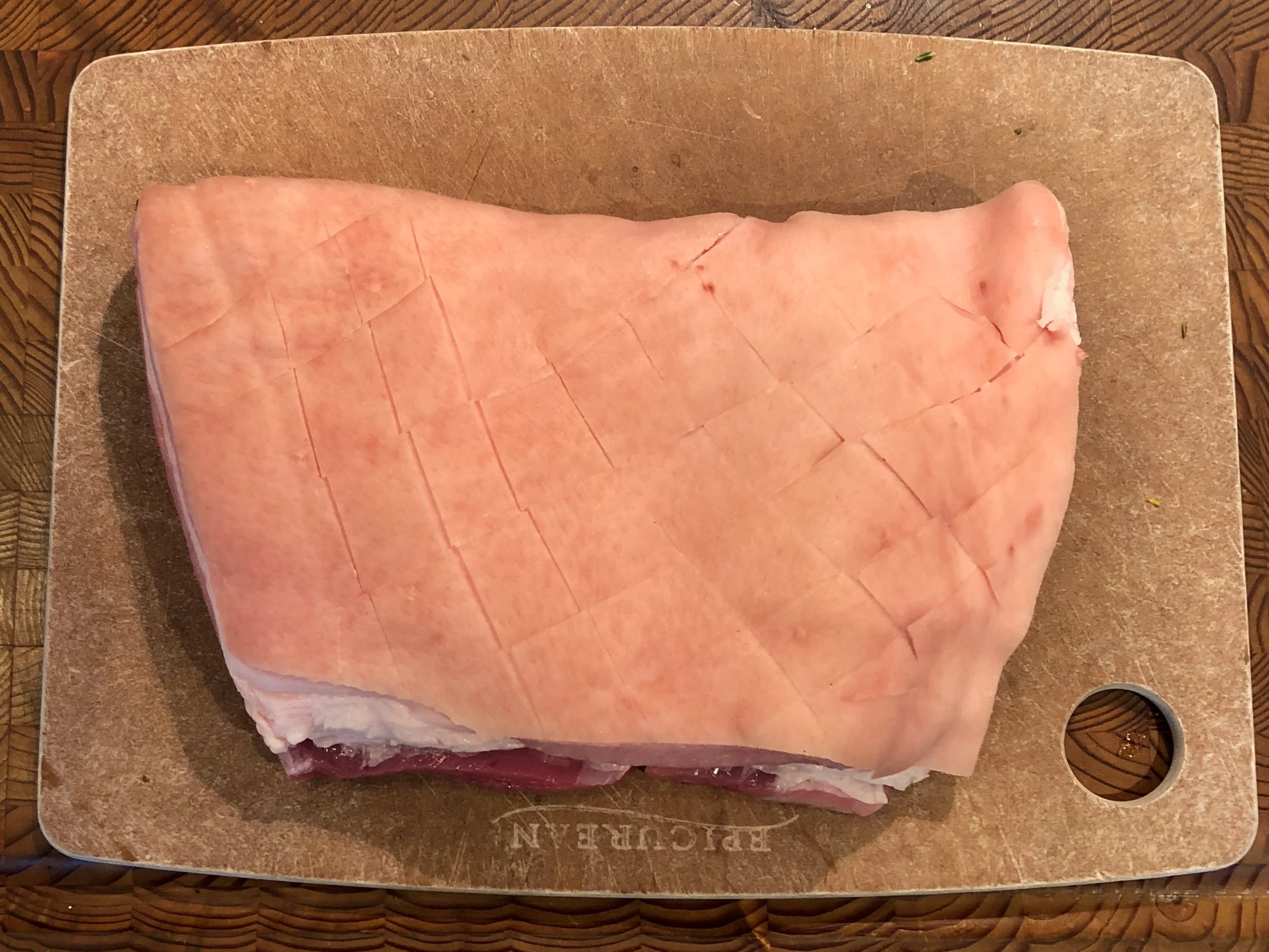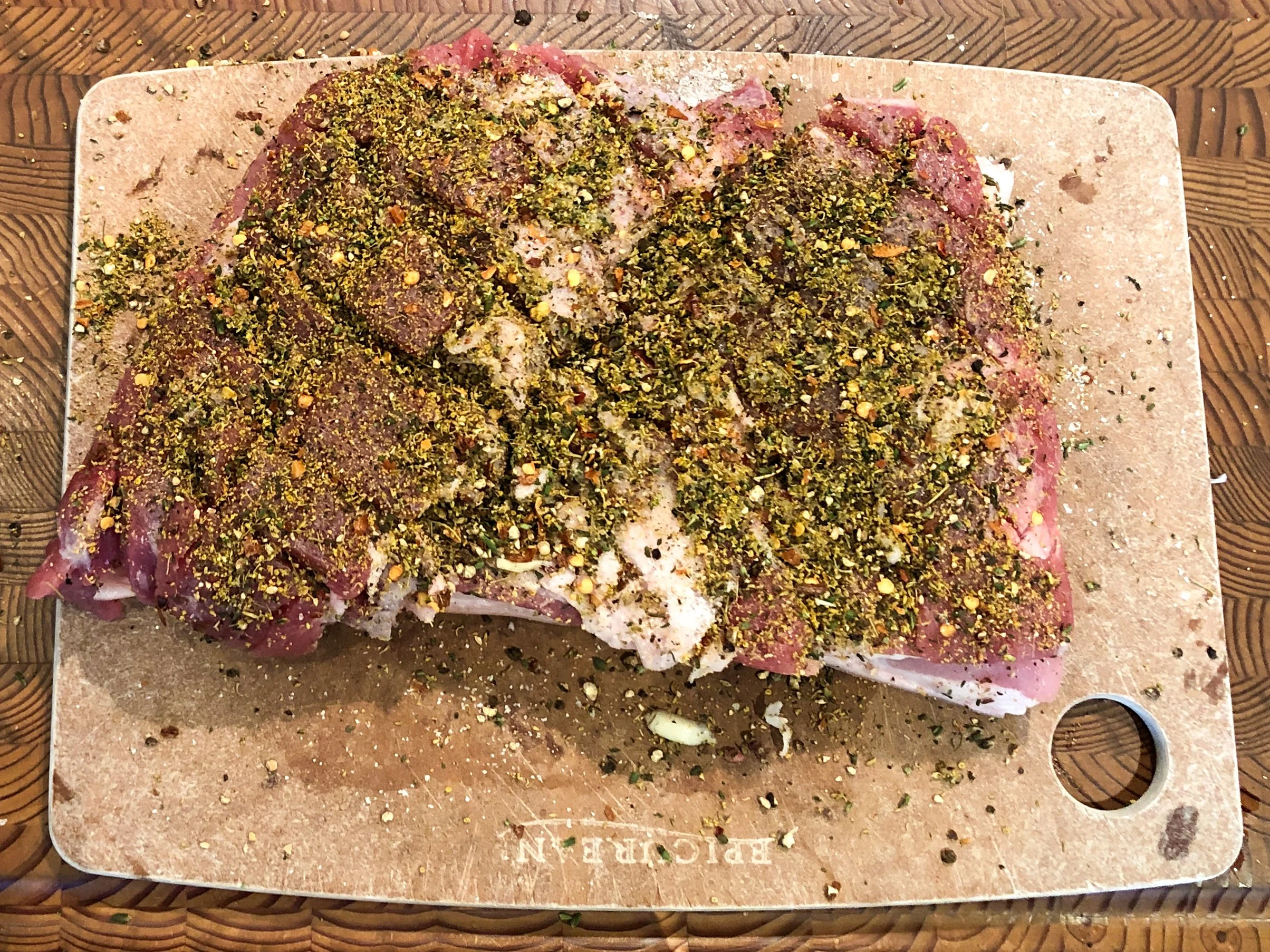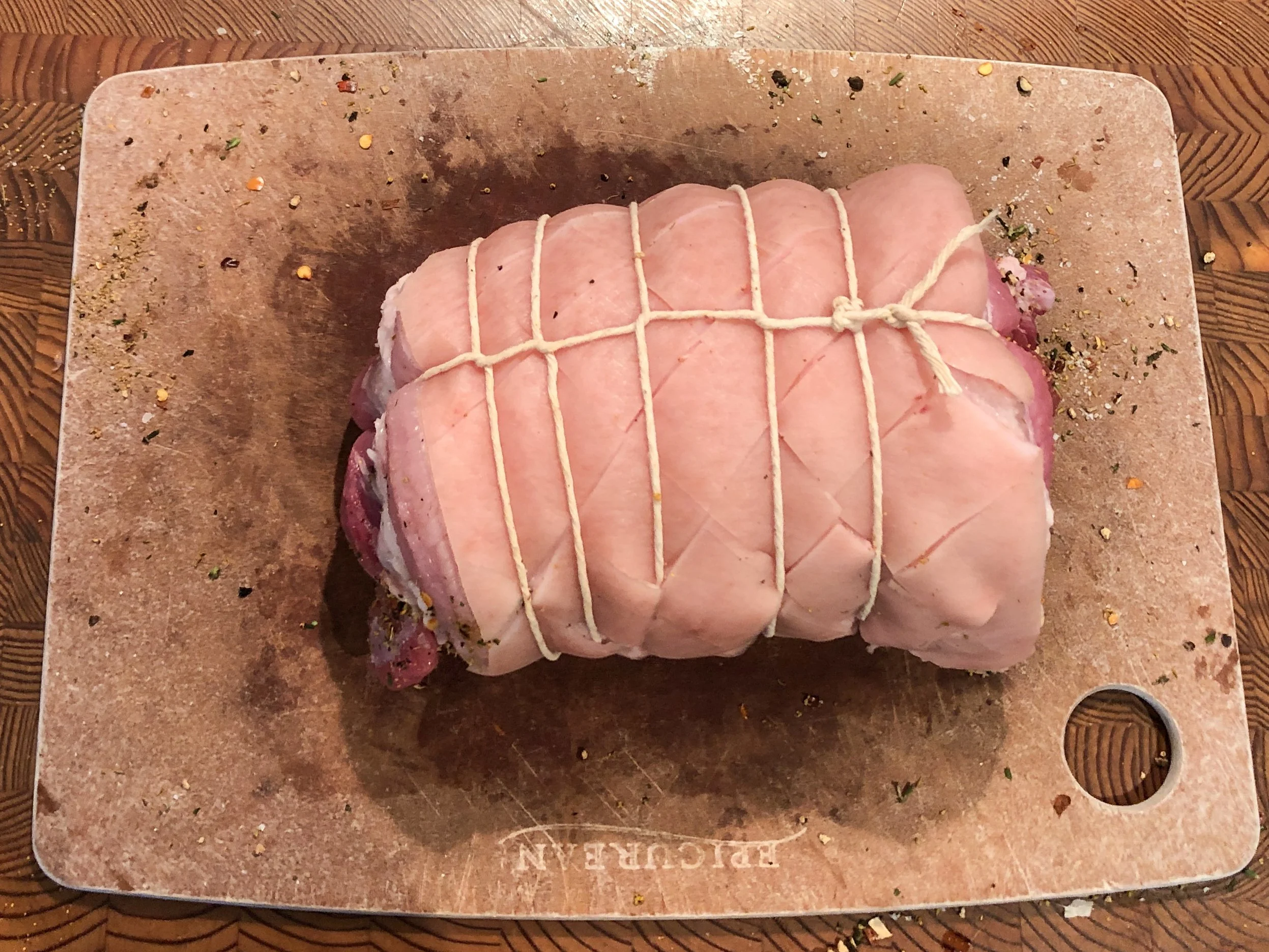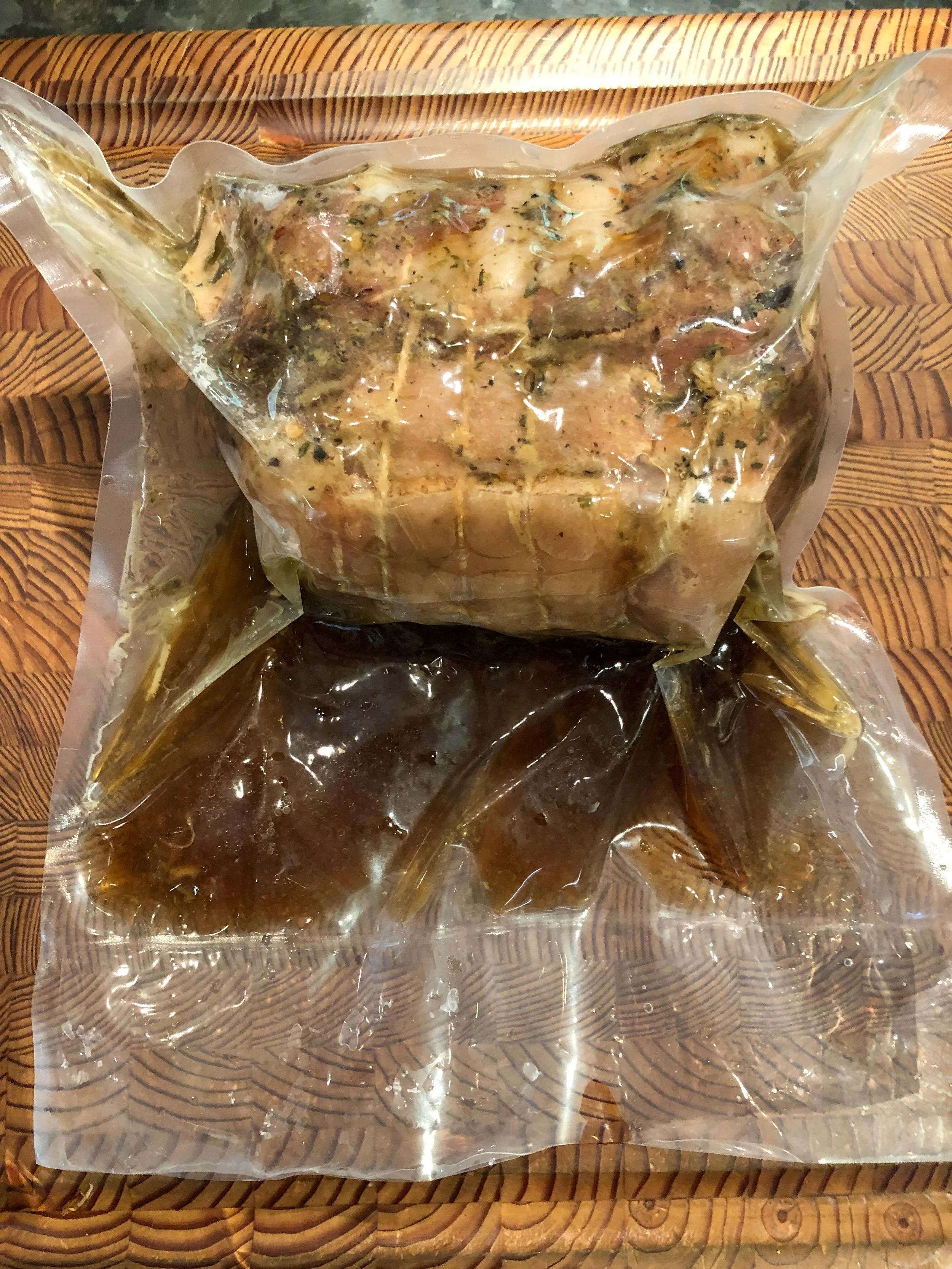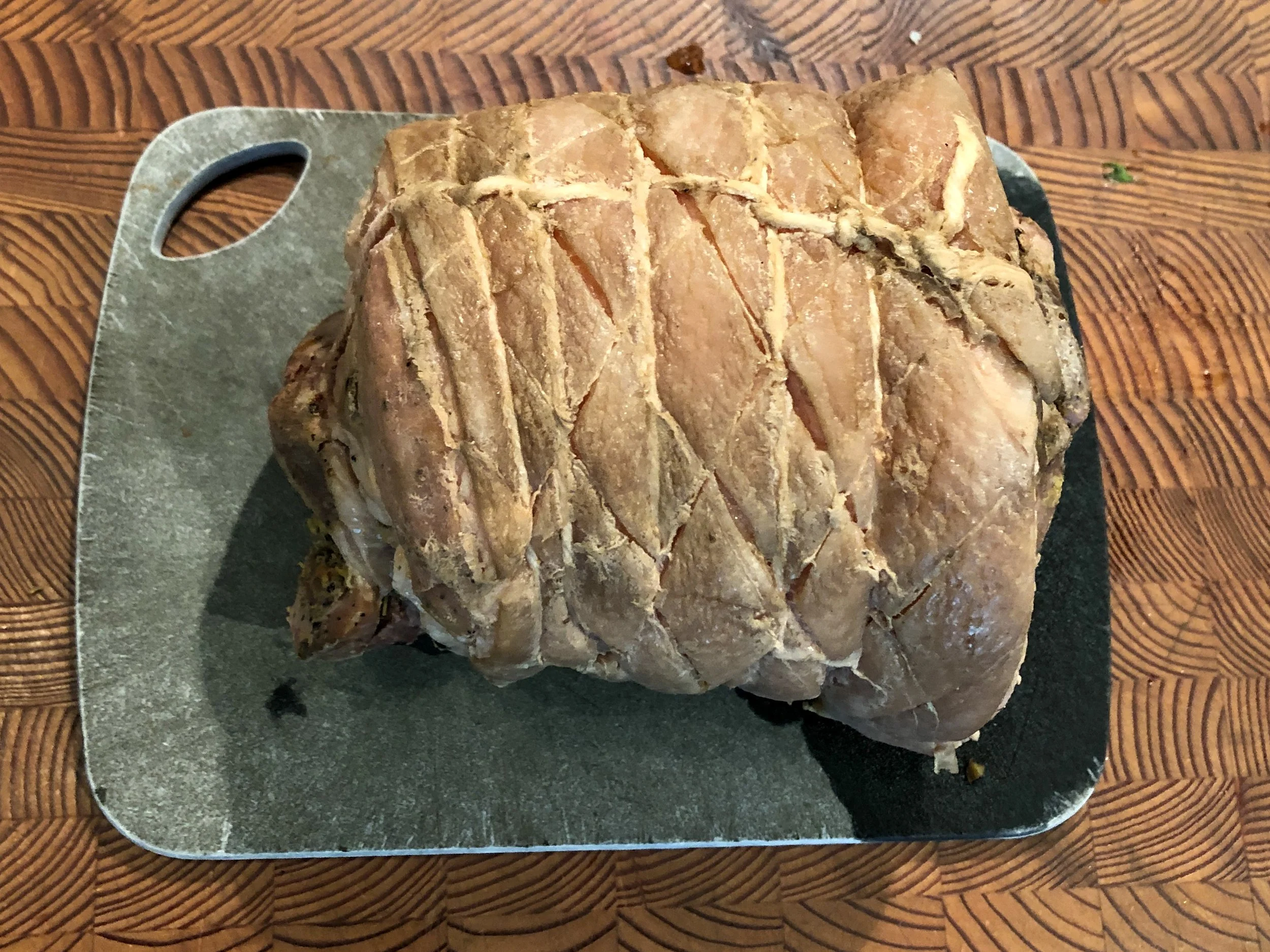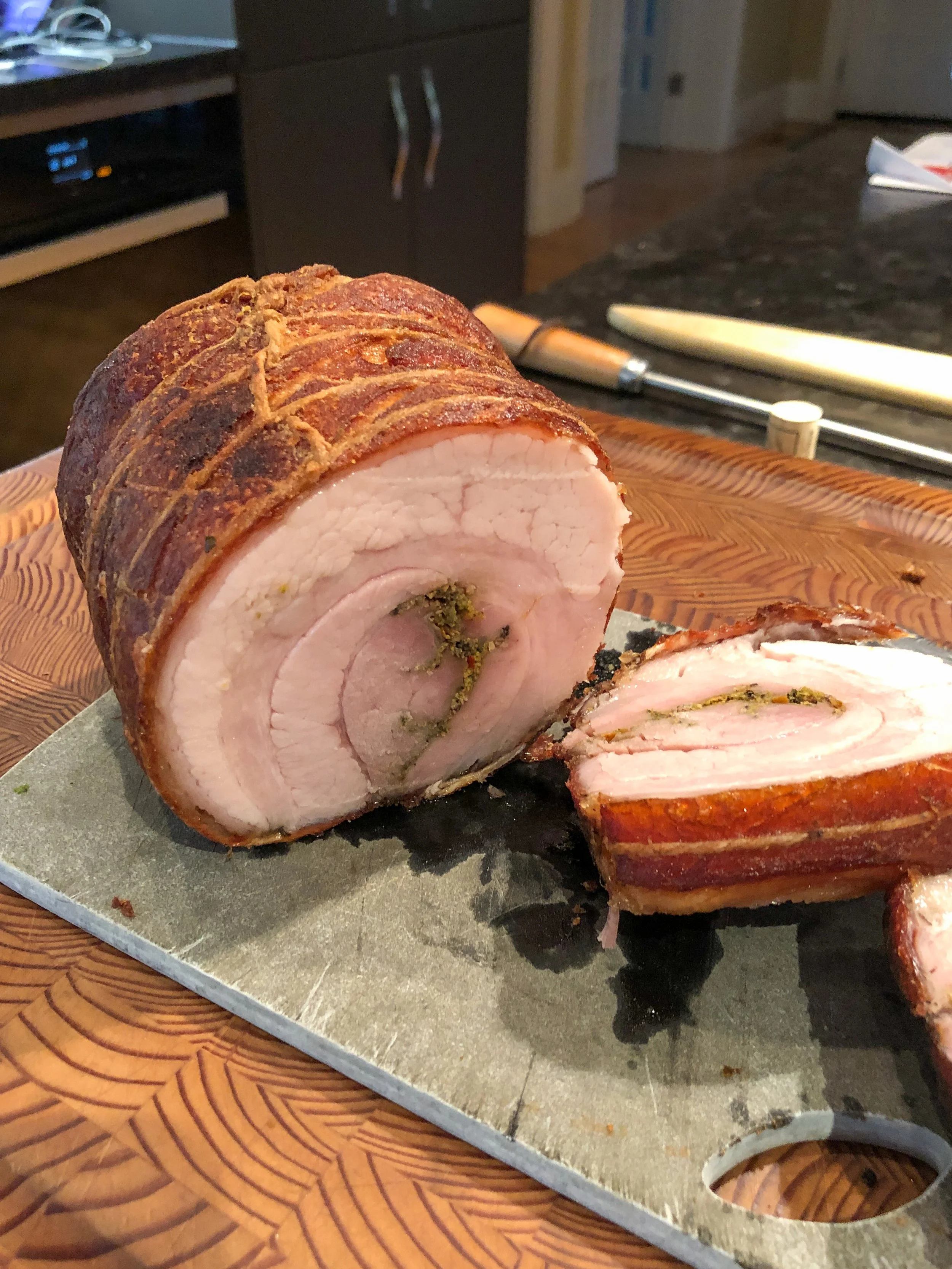SV Deep Fried Porchetta
Recently we attended the birthday party of our son’s father-in-law in Gozo, Malta. There were thirty people there to celebrate the occasion at which a delicious porchetta was prepared and served by our hosts, the birthday boy and his wife. It was enjoyed by all, and so good was it, that I made plans to prepare it myself on returning home.
Although it may be prepared as a whole roasted suckling pig, after all porchetta is “little pig” in Italian, more often it is made from just the boned out pork belly with or without the loin still attached. Critically though, the rind needs to be attached so as to create a delicious crispy skin . The meat side is cross hatched, salted, and then rubbed with a garlic, herb, and spice mixture. A variety of herbs may be used including rosemary, sage, and thyme. Crushed red pepper and citrus zest are sometimes added to the rub. You can of course, vary this mixture to suit your own tastes, but the quintessential ingredient is fennel pollen.
Fennel pollen is made from the flowers of the fennel plant and not the more readily available and commonly used fennel seed which are its fertilized ovules. According to the web site SPICEography, fennel pollen has a strong aroma of fennel, but its flavour profile is more complex and intense compared to fennel seeds. It evokes citrus as well as the licorice notes that you might expect from other parts of the fennel plant.
Fennel seeds have been used for centuries the world over. However, until the 1990s, fennel pollen was little known outside Liguria and Tuscany along Italy’s western coast. It was then that fennel pollen was “discovered” by the food writer Faith Willinger who had been living in and writing about Tuscany and Italy for many years. Through her writings, she introduced various chefs to fennel pollen including the celebrity chef Mario Batali . As a big fan, it was largely through him that fennel pollen became a popular ingredient used in many upscale restaurant kitchens.
Unfortunately, fennel pollen is not widely available and is expensive, as the fennel flowers from which it come, are typically harvested from wild fennel plants collected by hand. Fennel seeds are much easier to harvest so can be sold at a much lower price. While fennel pollen is largely foraged rather than cultivated, there are a few small farms which produce it. Italy, but also interestingly California, are the two primary places where fennel pollen is collected. Many Ligurian immigrants settled in the Bay area of northern Califorina, and it was they who planted the fennel that is now found growing all over the state in vacant lots and along roadsides.
There are a number of recipes for porchetta online. Many of these call for pork shoulder, but the preferred cut of meat is pork belly. In the past, the pork loin was kept attached to the belly when making porchetta. However, today’s pork has been bred to be very lean, so the time and temperature required to break down belly with its abundant collagen and fat, will over cook the much leaner loin; better then to leave it out!
Readers of my blog will know I am a big fan of cooking sous vide, so it will be no surprise then, that in choosing a recipe for porchetta I used J. Kenji López-Alt’s of Serious Eats recipe: Deep-Fried, Sous Vide, 36-Hour, All-Belly Porchetta. He does an excellent write up discussing the advantages and rational for the various steps but I will highlight his main points of why this recipe works:
Rubbing the entire exterior of the porchetta with kosher salt and baking powder creates an alkaline environment that promotes protein breakdown in the skin and helps retain moisture during cooking.
Sous-vide cooking ensures that the meat is cooked perfectly and evenly tender from edge to center.
Deep-frying the cooked porchetta in lard and/or oil quickly produces a crust that is evenly blistered, bubbled, and extremely crisp.
I followed his recipe as published but substituted fennel pollen for fennel seeds which he uses presumably because of cost and availability. If you do use seeds, be sure to purchase whole seeds, toast them lightly to maximize flavour, then grind them yourself. Sift the ground fennel to yield the finest powder possible as this will be the closest possible approximation of fennel pollen.
Cross hatched pork belly skin
Meat side scored and seasoned with salt. Next came a mix of toasted and ground peppercorns, crushed red pepper, thyme leaves, grated garlic, and of course fennel pollen!
Pork belly rolled into a perfectly cylindrical roast covered in a layer of skin bound in butchers twine.
In the sous vide pot at 68°C / 158°F for 31 hours!
Bag finally pulled. Notice all the rendered collagen laden juices and some fat.
After chilling in ice bath for 15 minutes, the juices and fat congeal. Importantly, the skin fragile from cooking also firmed so it wouldn’t tear when handling.
The congealed juices were gathered and later made into a delicious pan sauce.
Like all meat out of the sous vide bag, the porchetta looked pale and anemic. Next step, crisp up the skin by deep frying.
Out of the bag it looks pale and anemic, but nothing a little deep frying wont cure!
The video below shows the porchetta being deep fried in canola oil at 205°C / 400°F. One could use a deeper pot with more oil and deep fry it without having to turn and “baste” it, but to avoid spatter I elected for less oil.
For those averse to deep frying and the attendant splatter, another option is to chill the bag in the fridge overnight and crisp up in a 260°C / 500°F oven for 30 minutes. Without the overnight chill, the skin would crisp but the centre would overcook were one to do so with only a 15 minute chill.
The result was beautifully crispy skin! Maybe too crispy if there is such a thing!
Delicious juicy pork with a fantastic crispy skin!
The final result was absolutely delicious: soft, tender, nearly gelatinous sections of fat-streaked meat with a perfectly rosy central core. Of course being a first attempt, lessons were learned. The first is to not score the fat side. I believe doing so made removing the twine more difficult than were it to be un-scored. The other is to maybe deep fry the porchetta slightly less. While the skin was amazingly crisp, some may find it too so. That said, I can’t wait to repeat this, maybe next time with a little citrus zest. Or maybe I will try to sous vide a whole pig!
